My wife and I have developed a bit of a love-affair with Africa since our first holiday away together in Namibia in 2011. Not only was the country stunning, with amazing wildlife and hospitality, but it also benefits from some of the darkest skies in the world and many visitor facilities which allow amateur astronomers to really take advantage of them. We returned to the continent in 2013, 2014, 2015 and 2016 where I proposed under the same dark, Namibian skies with a telescope pointed at Saturn. When it came to selecting a destination for our honeymoon in 2017, there really seemed to be only one choice, but the question was where in the varied lands of Africa would we go?

Vamizi Island from space. The six villas line a north facing beach on the central part of the Island. Credit: Google Maps.
After much deliberation, especially around the type of holiday we wanted, we decided on a beach focused honeymoon with plenty of relaxation, in a similar vain to the wonderful holiday we had on Benguerra Island in southern Mozambique in 2015. These small African islands often also benefit from a lack of large predators, which often keep those inky black night skies tantalisingly out of reach on the mainland, lest you become a midnight snack for a wondering lion. However, we wanted to try somewhere new. A conversation with Melanie Dannhauser, the travel planner from &Beyond who had arranged all our previous trips to Africa suggested that a newly added property to the &Beyond portfolio might just fit the bill.
Vamizi Island
Vamizi Island is found amongst a collection of 32 small islands that make up the Quirmbas Archipelago in the Indian Ocean off the northeasten coast of Mozambique. Stretching almost 14km in length, but never more than 2km wide, the island is shaped on a gentle curve, allowing the views of the azure warm waters of the Indian Ocean to stretch to the horizon unimpeded.
Transfer to the island is by a small 4-6 seat Cessna type aircraft from Pemba airport, which is approximately a one hour flight time to the south. However, that time flies by as you are treated to spectacular views of the dozens of small islands that make up the archipelago.
As far back as the 15th century Arab dhow vessels would visit the local population that was known for a substantial weaving industry as well as fishing. This also attracted Portuguese traders, with most of the historic remnants on the island being of Portuguese origin including a fort and lighthouse. More recently, the primary economy of Vimizi continued to be based on fishing, but in the early 1990s, a group of Mozambican and European investors and philanthropists initiated a conservation project on the island which also saw the development of eco-tourism with the construction of six, large private villas. Profit from tourism is utilised to fund scientific and conservation work, with a small team of conservationists and marine biologists stationed on the island, as well as investing in local infrastructure including schools and a community clinic, for the three small villages located at the other end of the island near the airstrip.

Our home for two weeks, Villa Kipila. From the left, the dining room (with kitchen behind) and games and TV room above, in the centre the large living area, and to the right, the first of five bedrooms.
Each villa on the island is separated by hundreds of metres, ensuring complete privacy and is unique in design and rather large, sleeping between 12 and 16 people per villa. Every villa is staffed with its own butler, chef, driver (some of the best picnic spots would be quite a walk) and housekeeper. Home for us for the two weeks was Villa Kipila (meaning “plover” in Kimani), which is hidden away in three acres of private gardens, that open out directly onto a long golden beach. Benefitting from 4 adult en-suite rooms and one children’s bedroom (with adjacent nanny quarters), there is wonderful colour scheme of pastel blues and greens alongside the earthy woods and pitched Balinese-style timber shingle roof. Rounding out Kipila is a large living area, substantial dining room and separate kitchen (where Papi, our private chef prepared one incredible dish after another, having discussed menu ideas with us each day at breakfast), a games and TV room, and my favourite place to while-away several hours, a tower based on the Portuguese lighthouse, offering wonderful views while a gentle breeze rustles the treetops. Take a tour around Villa Kipila in the video below.
As well as relaxation, there are a variety of land and sea based activities to enjoy while staying on the island. Castaway picnics on distant beaches with shelters built with local materials are very Swiss-Family Robinson without the hardship and were a particular highlight, as well as guided nature walks through the mangrove forests found on the island with one of the biologists. You may even spot one of the ten troops of the small Samango monkeys. Given there is no source of fresh water on the island (the villas are supplied by a solar powered desalination plant), it is a small mystery where they get freshwater to drink. Clearly they know more than the local human residents! Vamizi is also home to Coconut crabs, the largest land-living arthropod whose legs can be as much as one metre in length.
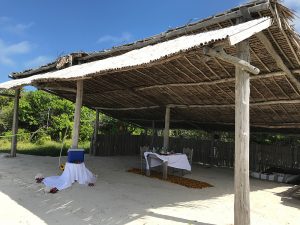
The location of our first of many castaway picnics. It was very much Swiss-Family Robinson without the hardship
Naturally, water based activities take centre stage. The waters around Vimizi benefit from over 180 species of coral and over 400 species of reef fish. There is a fully equipped dive centre serving the six villas, and offering snorkelling (quite simply the best I have ever experienced, feeling like I was in a giant aquarium with a cornucopia of colourful fish swimming around me in the shallow waters of a reef) to scuba diving at Neptune’s Arm, considered one of the top ten dive sites in the world, as well as kayaking through the island’s estuary and sunset dhow cruises (dolphins decided to accompany our vessel) and deep-sea fishing. Between July and September you may also spot Humpback whales travelling on their annual migratory path from East Africa to the Antarctic.
Quality of the Night Sky
Vamizi has not been assessed by the International Dark Sky Association, but they would be most impressed should they ever put their stringent dark-sky criteria against its skies. Less than 40 minutes after sunset, the Zodiacal light dominated the sky in the west, stopping me in my tracks when I walked down to the beach on the first clear night of our stay. I would actually go as far as to say it was annoyingly bright when trying to observe DSOs in that region of the sky. A few hours later the Sagittarian region of the Milky Way loomed to the south and was as prominent as any location I have had the pleasure to visit and observe from.
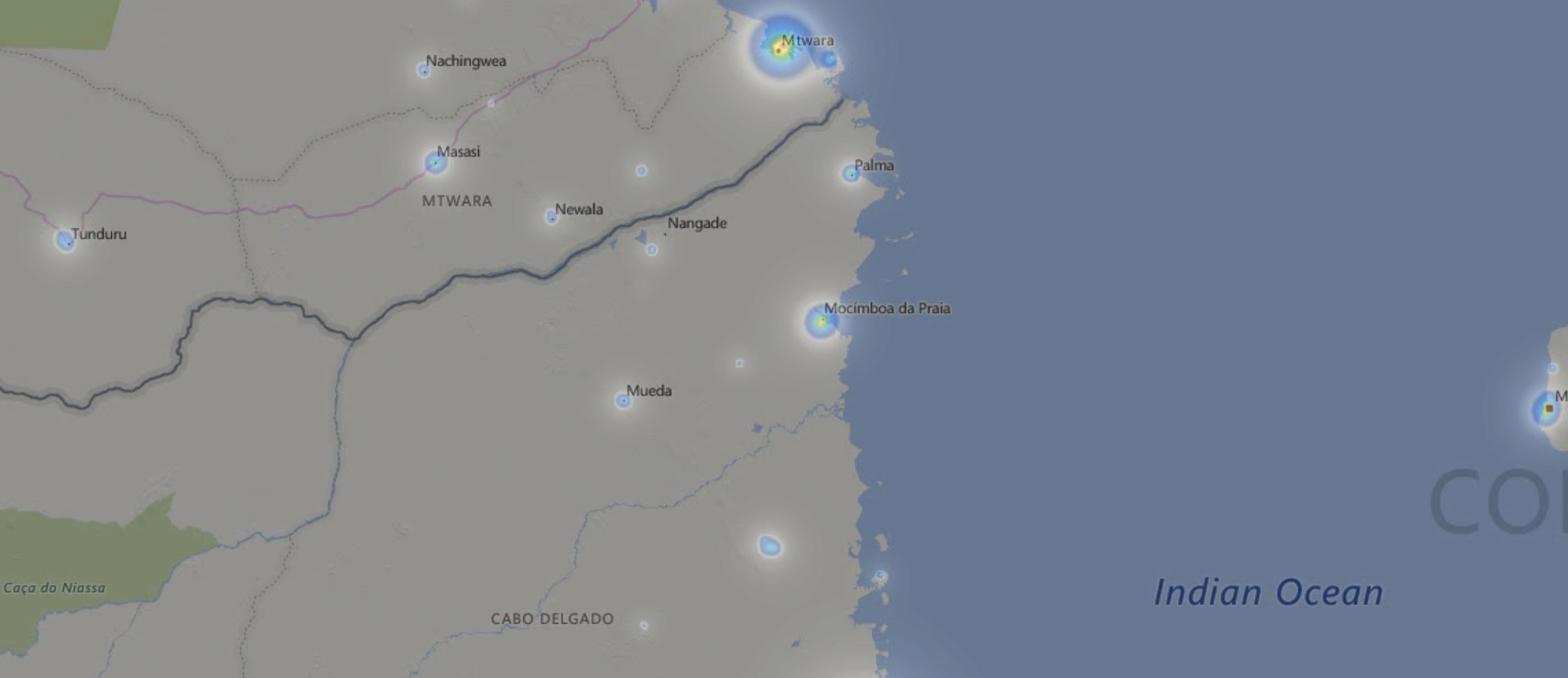
Located just above right of centre, the long thin island of Vamizi sits just of the coast of north Mozambique. There are very limited sources of light pollution. Source: LightPollutionMap.info
I assessed the limiting magnitude several times during our stay using stars in Libra and Virgo which were near the zenith around 10pm. My average estimate approached magnitude +7 which would put this in the top three darkest places I have observed from. The light-pollution map below confirms there is no real source of light to interfere with the beauty of the night sky. I only noted one small light coming from over the horizon to the north, and it was completely inconsequential to my astronomical activities. With each villa separated by hundreds of metres, there is no danger of more local lighting causing distraction.
I would also note, that at least during our stay, the atmospheric extinction I had observed over the sea in Benguerra was not particularly obvious on Vamizi, such that the whole sky was available to observe at its best. It was also often quite humid (above 80%), though fortunately I never had to deal with any dew problems, but it is an issue that could manifest.
I made a note of the weather during our stay on Vamizi. While such a limited sample set is no indication of clear skies throughout the seasons, we certainly enjoyed a good number of clear nights where stargazing would have been possible.
My Observing Equipment
There was no provision on Vamizi Island for stargazing, though with skies that good it really should be considered. As such, you currently need to bring your own observing equipment. It should be noted, that the transfer from Johannesburg to Pemba in Mozambique is on an Airlink Embraer ERJ135 which is rather small aircraft with a passenger capacity of less than 40, and only one row of small overhead luggage bins. Therefore, consideration needs to be made about the size of your carry-on-baggage if you want to transport your scope in the cabin. The Think Tank Photo Airport Essentials Backpack (you can read the review of the backpack here) complies with the most restrictive carry-on allowance I have come across and will fit under the seat in front of you, meaning you should always be able to avoid gate checking a bag into the hold.
While I also wanted to bring some camera equipment to capture some widefield night sky images, my priority was the image at the eyepiece, so as much aperture as I could fit in the bag was the most important consideration. Fortunately, I own the Takahashi FC-76DCU (you can read the review of FC-76 here), a 3” f/7.5 fluorite doublet refractor which is very transportable as it splits in two, with no component longer than 355mm, the scope comfortably fits in the backpack. Weighing less than 2kg, the scope is ably supported on a lightweight photo tripod and fluid birdwatching head (that also doubles as a camera mount). Rounding out the equipment were three 1.25” eyepieces, the 24mm Panoptic (24x mag / 2.7o field), the 7mm Nagler Type 6 (81x / 0.98o) and the 3-6mm Nagler Zoom (95x – 190x / 0.51o – 0.26o). I also snuck in a UHC filter.

The Think Tank Photo Airport Essentials back pack is the smallest scope bag I have. While it will always fit under the seat, it only just fit in the overhead bins.
Stargazing
Given this was our honeymoon, I restricted my stargazing to three sessions during the two-week stay, a post sunset session, a second around midnight and a third in the early morning to take advantage of the changing DSOs and the constellations that harbour them.

A remarkable amount of equipment can be squeezed in the back pack, including scope, camera body and two lens, as well as diagonal, several eyepieces and other accessories.
The Evening Session
The Hubble Space Telescope is never visible from the UK, so whenever I head south I always check if there will be any visible passes. One happened to coincide with my evening session, but clearing the horizon at 18:38 local time (Vamizi is 1 hour ahead of the mainland despite being only a few km from the shore) meant it would be passing over before even nautical dusk (18:49) had arrived. I have tried and failed a few times to see any structure in that most wonderous eye on the heavens in previous trips to Africa and I was intent on making another attempt. I set up down on the beach in front of the tree line that delineates the end of our garden around 18:25 with the 7mm Nagler in the focuser. After what seemed like no time at all, I picked up a brightening light in the sky passing between Canis Major and Gemini and began to aim my scope. Peak altitude for this pass was 45o under the sickle of Leo (which was upside down – I am still not used to seeing familiar constellations inverted). With dimensions on the long axis of 13.1m and a maximum width of 4.3m, at this pass closest approach distance of approximately 750km, it should be possible to resolve some of the shape of the satellite with the FC-76. Sadly, it was not to be. I was using my Manfrotto 190 tripod which while more than able to support the scope for typical stargazing, lacks the torsional rigidity of my Gitzo tripods and the vibrations as I rapidly tracked across the sky hid any details from view. Maybe next time.
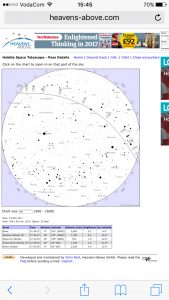
Screenshot of the HST path across the sky at the start of my evening session. Source: Heavens Above.
I abandoned my quest for HST details at just after the peak altitude to swing back west as the ISS was just rising above the horizon. Continuing with the 7mm for 81x, despite the slight wobble of the tripod, I had far more success with the station revealing the typical “Tie-Fighter” appearance. By the time the ISS was disappearing from view, nautical dusk had arrived. It was time to hunt for my first DSO of the night before it vanished below the horizon. M42 in Orion was my first ever DSO seen through a telescope, and all these years later, I still love to return to it. Despite only being 15o above the horizon and not yet in true darkness, the view was quite spectacular. Showing its distinctive green hue, the Trapezium blazed away at its heart, while the “fans” extended considerably away from the centre almost giving the appearance of a bird in flight with M43 as the head and beak. This was going to be a good observing session!
As I waited for true astronomical darkness to arrive, I was incredibly impressed with how prominent the Carina region of the Milky Way was. After around 15 mins of just watching more and more points of light appear in the sky with my gaze firmly on the MW, I turned back to the west to be faced with gigantic triangular pillar of ghostly white light extending all the way up to M44 in Cancer. It was one of the most impressive views of the Zodiacal Light I have ever witnessed.
Using the 24mm Panoptic, I swung the scope up to the Beehive Cluster, but the ZL was brightening the sky background, such that there was a noticeable drop is sky brightness as I panned away from the cluster. Despite the intrusion of scattered light from dust in the plane of the solar system, the cluster itself was a mass of bright points of light, all seeming flying in different directions likes bees around the hive. It is under conditions like these when colloquial names like the Beehive begin to ring true in my mind.
After spending a few minutes being drawn into M44, I found my gaze pulled towards a bright condensation in the lower region of the Carina Milky Way. A quick confirmation of my star charts confirmed it was NGC 2516 which is known as the Southern Beehive. In a reminiscent fashion to M44, there appears to be a fairly dense central core of stars, that perhaps extend in diameter of 30 arcminutes but several streamers of stars flow away from the core to almost a degree across. I found that the view using the 7mm Nagler for 81x was very similar to 24x magnification in the Panoptic of M44, making it quite obvious why it has the moniker it does. However, it really reinforces quite how remarkable M44 is. Cancer would probably go almost unnoticed were it not for that grand open cluster.
After the Northern Hemisphere had gone one-nil up in the shoot out of open clusters, it was time for the south to level the score. Around 20 degrees away, lies the most spectacular and largest known star forming region in our galaxy, NGC 3372 / Caldwell 92, the Carina Nebula. Extending over 200 LY in diameter (more than 7x the diameter of M42), this is a sight to behold in a small telescope. Extending to around 2o, it was far too large for the 7mm, so I switched back down to 24mm which perfectly framed the nebula in a 2.7o field. It appears to be three irregular strips of green glowing fabric, stitched together by strands of dust that bisect the nebula. If you can draw your attention away from the ionised regions of glowing gas, there are also several impressive clusters embedded in the gas like tiny sequins thrown across the cloth. This was the best view I have ever had of the Carina Nebula. Too large to be contained in the field of the larger instruments I have used in Africa, until now my only all-encompassing view was with my diminutive 2.4” FS-60, so the full 3” aperture of my FC-76 was quite a step up in performance.

Annoyingly bright! The Zodiacal Light around 40 minutes after sunset rising up to meet M44 in Cancer.
Staying in Carina (I do wish it was visible from the UK), just 4.5 degrees away is IC 2602 / C102, the Southern Pleiades. Less than half the age of the its more famous Taurine cousin, but approximately the same size though more distant, the cluster is made up of around 60 stars. Intrinsically, the cluster is not as spectacular as M45 through a rich field instrument, due to less stellar members, it does however pull a little trick to try and level the playing field. C102 sits atop a particularly dense region of the Milky Way, so a tremendous number of background stars create the illusion of far richer open cluster.
Having taken in some of the true showpieces of the keel of Argo Navis, ship of Jason and his Argonauts, I then headed east to great constellation of Centaurus. The 4th century Roman poet Ovid, stated that the constellation honours Chiron, the wisest and most just of all Centaurs and tutor to Hercules and Jason among others. I think it is quite nice he flanks the vessel Jason sailed in his quest for the golden fleece.
There were a couple of showpiece DSOs in Centaurus on my hit list. The first is easily visible to the naked eye under a dark sky, and even bares a Bayer designation, despite not being a star. Omega Centauri is the most massive Globular Cluster in the Milky Way. Truly huge, containing 10 million stars (and 4 million solar masses) in a ball 150 light years across, even at a distance of 15,800 LY, it appears as large as the full Moon. Being quite different from all other GCs in the galaxy, it is thought to have a different origin, likely that of the core of a long since consumed dwarf galaxy. While its stats are unrivalled in the GC world, I cannot help feel that other than its immense size, it is far less interesting a spectacle in the eyepiece than many other GCs. Using my 7mm Nagler, the globular dominated the central 50% of the field. There is a very slight brightening towards the core, but far more homogenous from edge to centre than virtually every other globular cluster in the heavens.
It was at this point I had become aware of repeated “tap, tap, tapping” sound of differing volumes that seemed to be all around me. Rather quiet, but with the ocean at low tide, there was no competing noise to rival it in the peaceful early evening. I reached up to switch on my headlamp to attempt to identify the source. My red light illuminated the sound and I found I was surrounded by several dozen small crabs all scurrying around looking for their dinner. Mystery solved, it was back the stargazing before I would have to stop for my own evening meal.
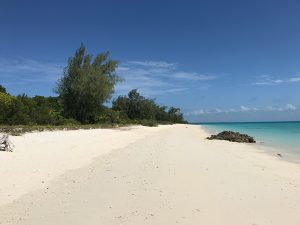
A day time view of the beach in front of our villa minus the crabs who were no doubt hiding from the hot Sun.
Using the star Gamma Centauri as a starting point, I headed 15o in azimuth straight to stunning galaxy Centaurus A (NGC 5128 / C77). Since spending some time with this galaxy in Namibia in 2016, it has become my favourite in the eyepiece. It really is a superlative galaxy in every sense of the word. Visible to the naked eye, it is one of the closest and is bright almost throughout the electromagnetic spectrum. Viewing it almost confounds definition as it appears as a bright amorphous elliptical galaxy, but it is bisected by a giant, twisted and contorted opaque dust lane. Looking somewhat like a burger between two halves of a bun, I preferred the view in the 24mm Panoptic despite its smaller size as it revealed more detail in the dust lane with hints of dark streams of dust that extend beyond the halo and merge into the blackness of space.
At this point, feeling I needed a few more galaxies in this session, I sung the scope around to the north to Leo is search of its famous triplet. Demonstrating just how important a dark sky is, using larger scopes in London has led to many of us calling it the Leo Doublet…if we are lucky. Here all three were very much on display with the morphology of each obvious, and was nicely framed in the 7mm
It was just at the moment I raised my head to the sky to ponder my next target when a fireball streaked across the sky. I estimated its brightness at around magnitude -3. While its brightness is not so remarkable, its longevity really was. I picked it up at the zenith and followed it for several seconds and approximately 70 degrees until it was finally extinguished by the atmosphere in the pan of the Plough.
That transient visitor had drawn my attention to Jupiter as it flew towards the northern horizon. It was clear that seeing conditions were good and with Jupiter at an altitude of around 75o I decided to take a short break from my DSO hunt. I switched to the Nagler Zoom 6mm setting and aimed at the giant world. Seeing was in fact exceptionally and I rapidly moved through the click-stops to the 3mm setting for 190x. I was presented with a wealth of detail. Multiple clouds bands, festoons and dark storms covered the planet. I had just missed the GRS which had moved from view. I found myself wishing I had taken the 2-4mm Nagler Zoom instead as tonight was one of those times when the magnification was only limited by the focal length of your scope and eyepiece collection.
Just before calling an end to this first observing session and heading back to the villa for dinner, I decided to pan the scope back round to the ancient and now defunct constellation of Argo Navis, perhaps to wave off Jason on his voyage. This time I focused on Puppis and two of its Messier objects, M46 and M47. I elected to view both simultaneously using the 24mm Panoptic. Though both are of similar apparent size (M46 is far larger and further away in reality), they appear quite different, even at only 24x. M46 is roughly spherical with an apparent spiral structure to its equally bright stars, whereas M47 looks as though a large number of tiny diamonds have been dropped on the dark celestial cloth and have bounced into a random arrangement with a few bright ones really drawing the eye.
Checking my watch, I knew an amazing meal would soon be served, so I quickly packed down the scope and headed back to the villa where I was greeted with a cocktail and canapés.






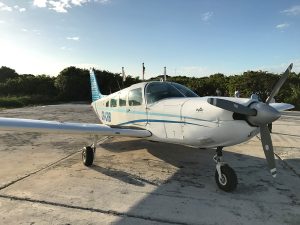
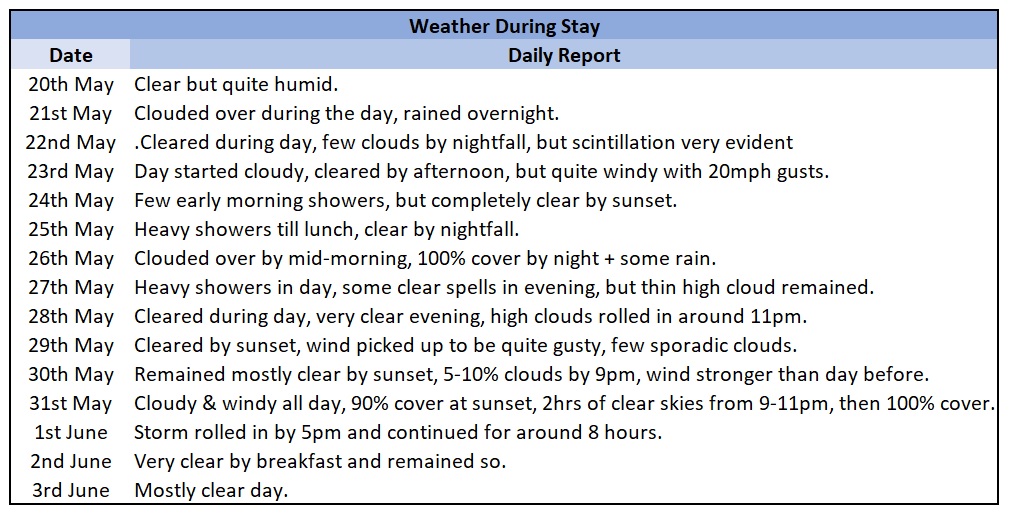
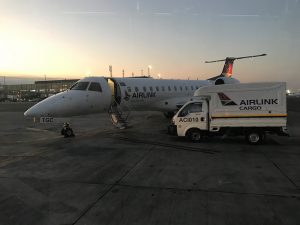
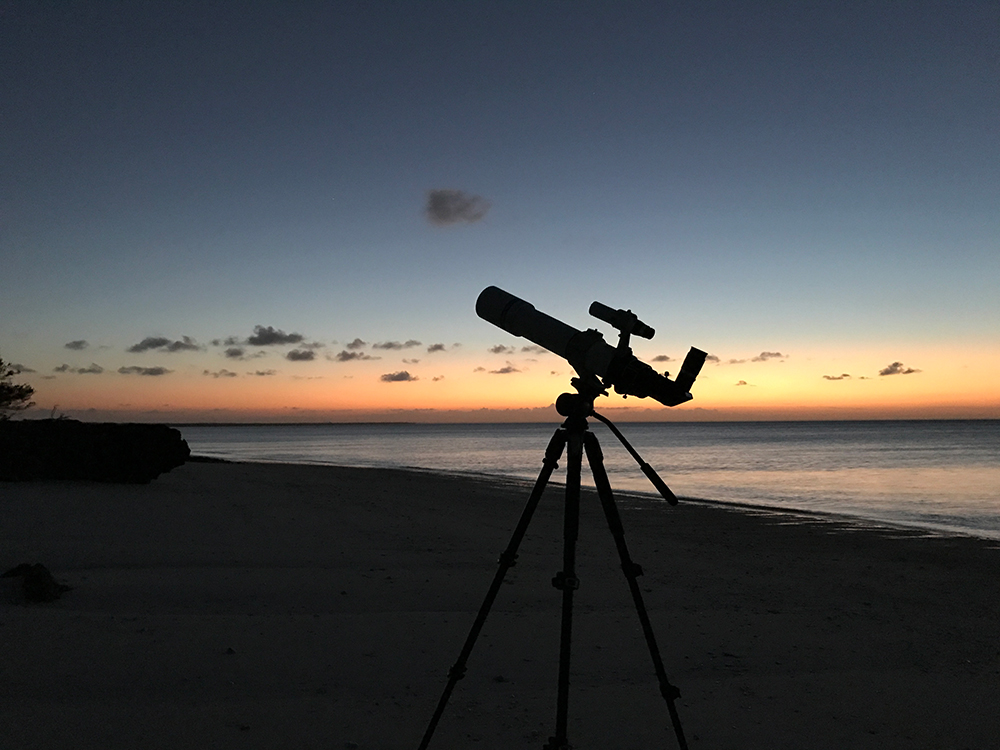
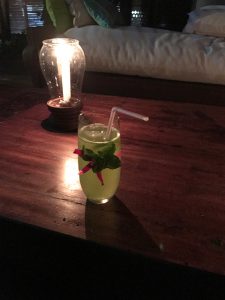
Pingback: Stargazing on Vamizi Island Part Two | Alpha Lyrae